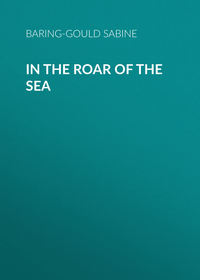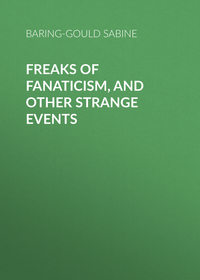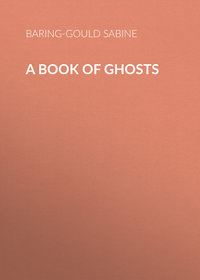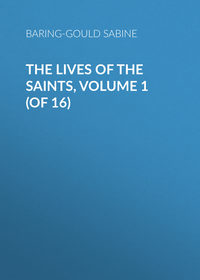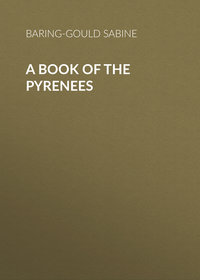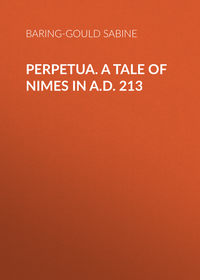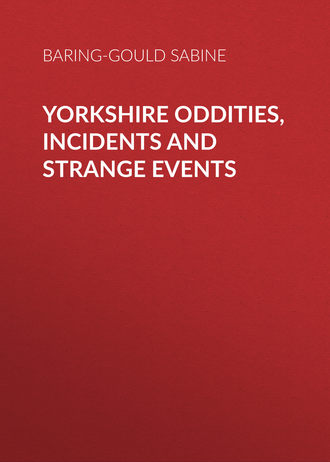 полная версия
полная версияYorkshire Oddities, Incidents and Strange Events

S. Baring-Gould
Yorkshire Oddities, Incidents and Strange Events
PREFACE
A residence of many years in Yorkshire, and an inveterate habit of collecting all kinds of odd and out-of-the-way information concerning men and matters, furnished me, when I left Yorkshire in 1872, with a large amount of material, collected in that county, relating to its eccentric children.
A friend, when he heard that I was collecting such material, exclaimed, "What are you about? Every other Yorkshireman is a character!" Such is the case. No other county produces so much originality – and that originality, when carried to excess, is eccentricity.
I look back with the greatest pleasure to the kindness and hospitality I met with in Yorkshire, where I spent some of the happiest years of my life. I venture to offer this collection of memoirs of odd people, and narrative of strange events, as a humble contribution to the annals of the greatest, not perhaps only in extent, of our English counties, and a slight return for the pleasant welcome it afforded a migratory penman from the South.
PREFACE TO REVISED EDITION
This book was well received in Yorkshire and elsewhere when it first appeared, and as it preserved notices of strong characters, records of whom were passing away, and some taken from Chap Books already become scarce, a new edition (the 4th) is issued thoroughly revised and only very slightly curtailed.
Lew Trenchard, 12th April, 1890.THE GHOST OF TRINITY CHURCH, YORK
Some years ago I heard mention made of an apparition said to have been seen in Trinity Church, Micklegate, York, which at the moment excited my curiosity. But as I heard no more about it, it passed out of my mind.
In 1869 I was invited to deliver a lecture at Middlesborough, when I met a clergyman who introduced himself to me as an old acquaintance. We had not met for some years, and then he had been a boy at school. About a week after I left Middlesborough I received from him the following letter: —
I"Easter Sunday Evening, 1869."Dear Mr. Baring-Gould.
"I venture, from the slight acquaintance I am happy to have with you personally, and the deeper one I have with your tastes from external sources, to enclose for your perusal a narrative of a perfectly true event, drawn up by myself some few years ago, at the request of some friends who doubted the truth of the circumstances therein related. If you have ever heard anything of it, and can help me in explaining it, I shall be grateful, as it perplexes me, as one always is teased when something which one cannot account for has been brought to one's notice.
"Mr. S – is going in a few Sundays to preach at the very church in York where this took place, and this bringing again before my mind the spectacle I then saw, caused me to apply to my friends for the account I gave them, and I now send it to you. I could, if you are interested, supply some minor details, but better by word of mouth, if ever we meet again. The only correction I should make is this: You will find that I relate a sequence of events, and I am not quite satisfied in my own mind that I have given the order of the incidents exactly as they occurred, and it is possible that I may have inverted them. At the time I was so startled that I was more intent on observing the figures than noting what was the succession in the scenes, if I may use the expression. Indeed, each reappearance was a surprise; and when I tried to recall each incident in the order in which it occurred, I found that though I could recall the appearance distinctly before my mind's eye, yet I could not swear to which scene preceded the other.
"This was the only occasion of my visiting the church. I confess the impression left on my nerves was not pleasant, and I do not think I should like to risk the effect of a repetition of it. Apologising for thus troubling you with my experiences,
"I remain, yours very truly,"A. B."P.S. – The Incumbent, Mr. W – , has left, and another, Mr. M – , has now the living of Holy Trinity, Micklegate."
The following account, dated 1866, was enclosed in the letter: —
"While staying in York at this time last year (1865), or perhaps a little earlier, I first heard of the apparitions or ghosts supposed to be seen in Trinity Church, Micklegate. I felt curious to see a ghost, I confess, if such a thing is to be seen without the usual concomitants of a dark night and a lone house. Accordingly I went to the church for morning service on a blazing hot Sunday morning in August last, with a girl about thirteen years old and her little brother.
"The east window of the church, I must explain, is of stained glass, rather tawdry, and of no particular design, except that the colouring is much richer in the centre than at the sides, and that at the extreme edge there is one pane of unstained glass which runs all round the window.
"The peculiarity of the apparition is, that it is seen on the window itself, rather less than half-way from the bottom (as I saw it from the gallery), and has much the same effect as that of a slide drawn through a magic lantern when seen on the exhibiting sheet. The form seen – I am told invariably – is that of a figure dressed in white walking across the window, and gives the idea of some one passing in the churchyard in a surplice. I say a figure, for the number is generally limited to one, and I was told that only on Trinity Sunday did more than one appear, and that then there were three.
"But I can vouch for the larger number appearing on other occasions, as on the day I was there, which was one of the Sundays after Trinity, there were rarely fewer than three visible.
"The figures began to move across the window long before the commencement of the service, when in fact there was no one present but ourselves. They did so again before the service began, as well as during the 'Venite,' and subsequently as many as twenty or thirty times, I should suppose, till the conclusion of the sermon.
"Of the three figures two were evidently those of women, and the third was a little child. The two women were very distinct in appearance. One was tall and very graceful, and the other middle-sized; we called the second one the nursemaid, from her evident care of the child during the absence of the mother, which relationship we attributed to the tall one, from the passionate affection she exhibited towards the child, her caressing it, and the wringing of her hands over it.
"I may add that each figure is perfectly distinct from the others, and after they had been seen once or twice are at once recognisable.
"The order of their proceedings, with slight variation, was this: The mother came alone from the north side of the window, and having gone about half-way across, stopped, turned round, and waved her arm towards the quarter whence she had come. This signal was answered by the entry of the nurse with the child. Both figures then bent over the child, and seemed to bemoan its fate; but the taller one was always the most endearing in her gestures. The mother then moved towards the other side of the window taking the child with her, leaving the nurse in the centre of the window, from which she gradually retired towards the north corner, whence she had come, waving her hand, as though making signs of farewell, as she retreated.
"After some little time she again appeared, bending forward, and evidently anticipating the return of the other two, who never failed to reappear from the south side of the window where they had disappeared.
"The same gestures of despair and distress were repeated, and then all three retired together to the north side of the window.
"Usually they appeared during the musical portions of the service, and especially during one long eight-line hymn, when – for the only occasion without the child – the two women rushed on (in stage phrase), and remained during the whole hymn, making the most frantic gestures of despair. Indeed, the louder the music in that hymn, the more carried away with their grief did they seem to be.
"Nothing could be more emphatic than the individuality of the several figures; the manner of each had its own peculiarity. I do not doubt that if the stained glass were removed, a much plainer view would be obtained. I think so, because the nearer the centre of the window, where the stained glass was thickest, there the less distinct were the forms. It was like catching glimpses of them through leaves. But nearer the edge of the window, where the colours were less bright, they were perfectly distinct; and still more so on the pane of unstained glass at the edge. There they seemed most clear, and gave one the impression of being real persons, not shadows.
"Indeed, by far the most remarkable and perplexing incident in the whole spectacle was this, that on one occasion, when the mother and child had taken their departure, the medium figure – the nurse – waved her hands, and after walking slowly to the very edge of the window, turned round whilst on the pane of unstained glass, and waved her arm towards the other two with what one would call a stage gesture, and then I most distinctly saw, and I emphatically declare I did see the arm bare nearly to the shoulder, with beautiful folds of white drapery hanging from it like a picture on a Greek vase. Nothing could be plainer than the drag of the robes on the ground after the figures as they retired at the edge of the window where the clear glass was, previous to going out. The impression produced was that one saw real persons in the churchyard; for though the figures were seen on the window, yet they gave one the impression of walking past the window outside, and not moving upon the glass.
"No one in the church seemed to be in the smallest degree attracted or discomposed by all this, or, indeed, to observe it.
"I talked a great deal on the subject with Miss C – , daughter of the late Dr. C – , of York, and she told me that Mr. W – , the Incumbent of Trinity Church, would give anything to get rid of it, or discover the imposture, if imposture there be. She told me that he and his family had watched day and night without being able to find any clue to the mystery. Their house is in the churchyard and opposite the east window, and therefore very favourably placed for such an investigation. I am not inclined to think that the trees outside the church at the east end can originate the appearance by any optical illusions produced by waving branches. I could see their leaves rustling in the air, and their movement was evidently unconnected with the appearance and movement of the figures.
"A. B."This curious communication led to my making inquiries, and I speedily heard of several persons who had seen the "ghosts" at a later date. Friends to whom I applied have sent me the following letters, written independently of one another. They naturally shrink from having their names published, but I can testify to these accounts being perfectly bona fide: —
IISouth Parade, York,March 22nd, 1871."Dear Mr. Baring-Gould,
"I promised to send you an account of the ghost at Holy Trinity, Micklegate, and I now forward you the enclosed, written by a friend on whose word you may perfectly rely.
"I heard another account a few days ago from a lady who saw it on Sunday, the 19th February last. She described the figure – for she saw only one – as being dressed in a shining white garment, and says that it crossed the east window twice, with a slightly 'skipping' step. It appeared to be outside the church, as she saw it distinctly through the stained glass.
"I have never seen it myself, though I have been several times to the church.
"There are four lights in the east window, and the glass of the two central lights is of a darker tint than that in the side ones. There are, however, narrow panes of transparent glass in each of the lights, so that a person passing across the window outside could be distinctly seen by anyone sitting in the west gallery.
"The sill of the east window is about five feet from the ground outside, and about seven feet from the pavement inside; about ten yards from the east wall separating the churchyard from a private garden.
"Yours very truly,"R. T."This is the enclosure alluded to by my friend "R. T.": —
III"Having heard from several people of the ghost at the Church of the Holy Trinity, Micklegate, York, on Sunday, at the end of September, 1869, a friend and myself made up our minds to go and see if we also could be favoured with a sight of this wonderful apparition.
"Well, we went up into the gallery, the only place whence they say it is to be seen. You may, perhaps, already know that the gallery faces the east window, which is filled with modern stained glass.
"I am afraid that our attention rambled somewhat from the service, for we were looking out for the ghostly visitant. However, we watched and watched, as we began to think, in vain, until at the very end of the second lesson, when, just before the beginning of the 'Jubilate Deo,' I saw a figure, I should say of a shortish woman, with something white folded over her, covering even her head and face, but still I could see what it was. The figure appeared to walk very fast across the two middle lights of the east window, from right to left (i. e., from south to north), and seemed to be at some distance from the window.
"The strange thing is, that I saw it clearly through the thick painted glass.
"The whole thing happened so suddenly, and really surprised me so much, that for some time I could hardly get up from the seat or find my place at the beginning of the chant. Just as it disappeared my friend said, 'Did you see that?' To which, of course, I answered, 'Yes; did you?' that was all we saw; and a lady who was there at the same time, whom we knew, saw it also, exactly as we did, only apparently not with the same distinctness.
"Many persons have seen a great deal more. I believe that the figure is generally seen to walk across the window in the reverse way to that which my friend and I saw, and returns with a child, some say with two.
"We examined outside the window. It is a good deal above the ground, about five feet, I should think, and at the side of it is a very old gravestone, with no inscription on the headstone as far as I could make out. I believe it is currently reported that the apparition issues from that grave.
"Some people thought that it might be a shadow caused in some peculiar manner by the trees that grew outside; but it was not, for the trees were cut down about three years ago, and the apparition is still seen, as it has been, I have been told, for a century.
"I have nothing to add, except that this is a true and unexaggerated account of what I saw."
IVYork, March 28th, 1874."Sir,
"Owing to severe illness in my family, I was not able to reply to your note earlier. I will now try and tell you what I have seen and been told on the subject of the ghosts at Holy Trinity Church, Micklegate.
"A York lady, now dead, told me she remembered seeing it when a child, and that she once read an account of it in an old History of York: she thought the book must have been published in the seventeenth century.
"We now live in the parish of Holy Trinity, and attend the church regularly. A part of my family sit in the gallery, therefore I will tell you, in as matter-of-fact a manner as possible, what I myself have seen, and leave one of my daughters, if she likes, to give you her experiences.
"I must state also that the ghost is seen more or less distinctly as you happen to be seated in the centre or side of the gallery; as a rule, the former is the best place.
"As I have no faith in ghosts, I have been most wishful to have the matter cleared up. At present I cannot account for the appearance in any way.
"I went many times to the gallery in hopes of seeing the phenomenon, but was repeatedly disappointed. At last, one dull day, hopeless for the purpose as I thought – rain was falling at the time – I was startled by seeing something.
"There are two east windows – one on the right, filled with common green glass, the organ in front of it. From the outside of this window I saw something move, and immediately a graceful figure of a girl of eighteen or twenty years crossed the outside of the stained east window with a light, free step. She was entirely covered with a fine lace veil which, as she walked and met the air, showed the outline of the head and figure; the features I could not distinguish, but could see a shade through the veil where they naturally would be.
"The veil was of a pure white, flowing back as a train as she walked. In two or three minutes the figure returned, the robe flowing back in the same way, and disappeared behind the organ window.
"The figure appeared to me to be decidedly outside the window, and at a greater distance than was possible for any one to be; in the first place, because the east window is high up, and therefore anyone walking past it, to be seen at all, must be at some little distance from it; and, secondly, because there is a dead wall within a few yards of the window.
"The pure white of the robe quite obliterated the colours in the window, but the lead work was distinct enough, and the figure appeared behind it The distinct outline of the figure is most striking.
"The apparition always returns to the organ window. I have seen this several times since the first. Owing to the dull day and the darkness of the windows, the appearance on the first occasion was the more remarkable. Two or three other figures also appear, but I never thought them as distinct as the first, and I thought the second and third might be reflections of the first. The two or three often move quickly back and forwards with a dancing movement somewhat like the reflection of the sun on a wall, but taking the form of human figures. However, it was dull and raining when first I saw the apparition, so that on that occasion there could have been no reflection of sunlight.
"These appearances are sometimes not seen for weeks and months; then they appear once or twice on succeeding days or Sundays. No one can be sure of seeing them if they go to the church for that purpose. I do not believe the apparition takes place at one more favoured time than another, though some people like to think so. The present rector wished to abolish the 'ghosts,' and was advised to cut down one or two trees. This was done; all thought that the ghosts were banished. Ten months after there was a gay wedding; my daughters went into the gallery to witness the ceremony, and lo! the 'ghost or ghosts' were there also. They had not been seen for nine or ten months. That was the first occasion since the cutting down of the trees on which they reappeared.
"The Sunday-school children who sit in the gallery see the form so often as to be quite familiar with the sight, and call them 'the mother, nurse, and child.'
"The legend I have heard told of it is that a family, consisting of a father, mother, and only child, lived here once upon a time. The father died, and was buried at the east end of the church, under or near the organ window. After a while the plague broke out in York and carried off the child, and it was buried outside the city, as those who died of plague were not allowed to be laid in the churchyards for fear of communicating the infection.
"The mother died afterwards, and was laid in her husband's grave, and now, as in her lifetime, continues to visit the grave of her child and bemoan the separation. The child is brought from its grave in the plague-pit by the mother and nurse, and brought to the grave of its father, and then it is taken back to where it lies outside the walls."
"L. S."VThe following appeared in the "Newcastle Daily Chronicle" a couple of years after the publication of my book, in 1874: —
"Sir, – On Good Friday last I went to Holy Trinity Church, York, for morning service, at 11 o'clock, and repaired with a friend to the gallery, being anxious to see a certain apparition which is said to haunt the place.
"The gallery is situated at the extreme west end of the building, and faces the east window, from which it is distant some 50 feet or so. It is said that in the aisle and body of the church nothing is ever seen. The gallery was full, but no one seemed to have come there especially for the ghost, and though many of them afterwards said they saw it, they were not in the least affected by the apparition, treating it as a matter of course, to which they were well accustomed.
"I kept my eyes fixed upon the east window for nearly the whole of the hour and a half during which the service lasted, but was not favoured with a sight of the phenomenon; although others saw it cross the window and return, and my friend, who knows it well, called my attention to the fact, at the moment, yet I could not perceive nothing. I therefore left the place as unbelieving as ever, and supposed that either I was the victim of a hoax, or that it required a great stretch of imagination to fancy that a passing shadow was the desired object. However, not liking to discredit the statements of many friends who were used to seeing it almost every Sunday, I consented on Easter Day to go to the same place and pew. The seat I occupied was not an advantageous one, a large brass chandelier being between me and the lower panes of the window. In the middle of the service my eyes, which had hardly once moved from the left or north side of the window, were attracted by a bright light formed like a female robed and hooded passing from north to south with a rapid gliding motion outside the church apparently at some distance. The window is Gothic, and I fancy, from 20 to 25 feet high, by 12 to 15 feet wide at the base. The panes through which the ghost shines are about 5 feet high and about half-way between the top and bottom. There are four divisions in the window, all of stained glass, of no particular pattern, the outer on right and left being of lighter colour than the two centre panes, and at the edge of each runs a rim of plain transparent white glass, about two inches wide, and adjoining the stone work. Through this rim, especially, could be seen what looked like a form transparent, but yet thick, (if such a term can be used) with light. It did not resemble linen, for instance, but was far brighter, and would, no doubt, have been dazzling to a near observer. The robe was long, and trailed. The figure was of course not visible when it had crossed the window and passed behind the wall. My friend whispered to me that it would return, must return, and at the end of five minutes or so, the same figure glided back from right to left, having turned round while out of sight. About half an hour later it again passed across from north to south, and having remained about ten seconds only, returned with what I believe to have been the figure of a young child, and stopped at the last pane but one, where both vanished. I did not see the child again, but a few seconds afterwards the woman reappeared, and completed the passage, behind the last pane, very rapidly. Nothing more was seen during the service, and no other opportunity presented itself to me for making observations. During each time, the chandelier prevented me from obtaining a complete view but there could be no doubt as to the shape, a certain amount of indistinctness, however, being caused by the stained glass. On the reappearance for the last time, I saw the head, which was, I believe, that of the child, move up and down distinctly, as if nodding. The figure shone with dazzling brightness, and appeared to be at a considerable distance, say thirty yards or so, though at the same time as distinct as possible, considering the obstruction of coloured glass. Each time the level upon which it glided was precisely the same, and afterwards, on carrying a straight line from the spot in the gallery where I sat, through the part of the glass where the feet of the figure shone, and continuing that line (in my mind's eye, with all the objects before me, except the ghost, whose position I had taken good notice of), I found that it would traverse a thick holly tree eight or nine feet high at about four feet from the ground, and at two or three feet from the ground a low wall about four feet high, and would reach the ground itself in the middle of a gravel yard belonging to the back premises of the house, called the vicarage, at a distance of twelve or fifteen yards from the window. Any person walking between the window and the holly tree would barely be seen at all, much less be seen in the place which the apparition occupies; and any one on the further side of the tree would be almost if not quite invisible on account of the holly and other bushes and the dead wall. Any one about there at all can easily be seen from the many houses on all sides.




